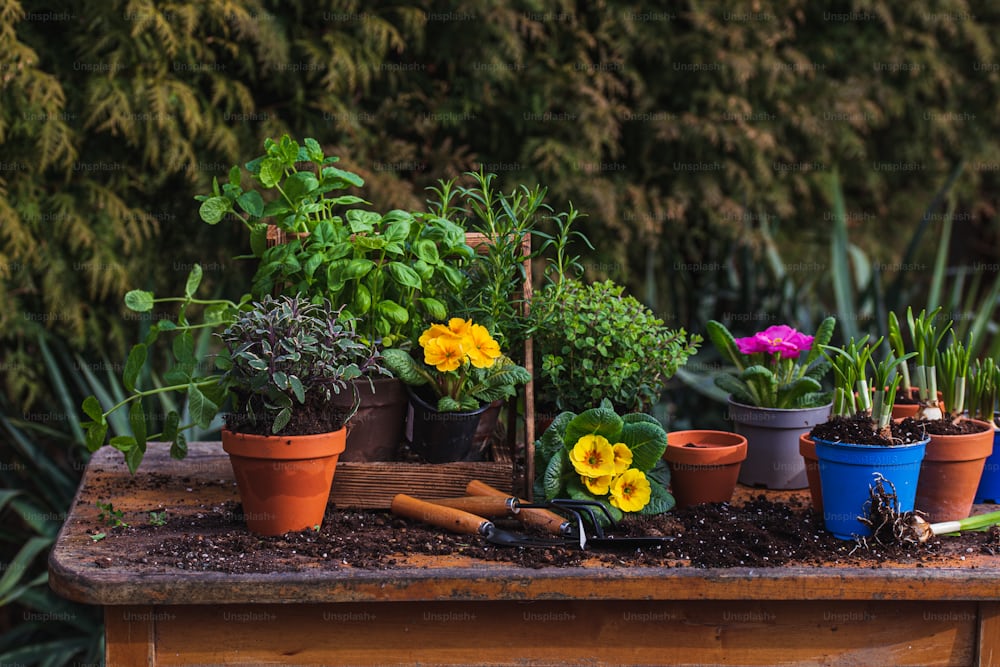
When it comes to making your patio a bit more lively, choosing the right plants involves more than just picking what looks nice. You need to start by assessing how much sunlight your patio receives throughout the day. Once you have that figured out, selecting plants that match your local climate is crucial. Soil type and maintenance preferences also play significant roles in your decision. Balancing these factors can be a bit tricky, but don’t worry, there’s a method to the madness. Let’s explore the steps to ensure your patio becomes a thriving green space.
Assess Your Patio’s Sunlight
To choose the best plants for your Perth Patio Concepts, first determine how much sunlight the area receives throughout the day. Observe your patio at different times to see if it’s bathed in full sun, dappled with light, or mostly shaded. This step is crucial because different plants have unique sunlight needs.
If your patio gets six or more hours of direct sunlight daily, it’s considered full sun. Plants like tomatoes, petunias, and sunflowers thrive in these conditions.
For patios with partial sunlight, which means around three to six hours of direct light, opt for plants like impatiens, begonias, or ferns. They do well with a balance of sun and shade.
In case your patio is mostly shaded, receiving less than three hours of direct sunlight, focus on shade-tolerant plants such as hostas, heucheras, and certain varieties of ferns. These plants are adapted to low-light environments and can still flourish.
Once you’ve assessed the sunlight, you can match plants to the light conditions effectively. This ensures they grow healthy and vibrant, enhancing your patio’s beauty.
Understand Climate Requirements
After assessing your patio’s sunlight, it’s important to consider the climate to ensure your chosen plants will thrive. Start by identifying your local climate zone. Whether you live in a hot, dry area or a cool, wet one, knowing your climate will help you select plants that can handle those conditions.
Different plants have varying needs when it comes to temperature and humidity. For instance, succulents are perfect for arid regions, while ferns thrive in humid environments. Understanding these requirements is crucial for successful gardening.
Here’s a quick guide to help you match plants with your climate:
| Climate Type | Suitable Plants |
| Arid | Succulents, Cacti |
| Humid | Ferns, Orchids |
| Temperate | Roses, Lavender |
| Tropical | Hibiscus, Bougainvillea |
Keep in mind that some plants can adapt to a variety of climates, but others are more sensitive. Knowing your USDA Hardiness Zone can also provide valuable insights. This system categorizes regions based on average minimum winter temperatures, helping you understand which plants can survive year-round in your area. Don’t forget to consider microclimates on your patio, like sheltered corners or spots exposed to wind, as they can affect plant performance. By aligning your plant choices with your climate, you’ll create a thriving patio garden.
Determine Your Soil Type
Understanding your soil type is essential for selecting the right plants for your patio. Different plants thrive in different soil conditions, so knowing what you’re working with can make all the difference. Start by grabbing a handful of soil from your patio area and examining its texture. Is it sandy, clay-like, or loamy?
To identify your soil type, consider these three characteristics:
- Drainage: Does water quickly run through your soil, leaving it dry, or does it stay wet for a long time?
- Texture: Rub the soil between your fingers. Sandy soil feels gritty, clay soil is smooth and sticky, while loamy soil is crumbly and balanced.
- Color: Rich, dark soil usually indicates high organic content, while pale soil might lack nutrients.
Performing a simple soil test can also help. You can buy a soil testing kit at a garden center or online. This test will reveal important details like pH level and nutrient composition, guiding you in choosing plants that will flourish.
Once you know your soil type, you can select plants that naturally thrive in those conditions, ensuring a vibrant and healthy patio garden. Properly matched plants won’t only grow better but also require less effort to maintain.
Evaluate Maintenance Needs
Consider how much time and effort you’re willing to dedicate to maintaining your patio plants. Some plants require daily attention, while others thrive with minimal care.
First, think about your lifestyle. Are you often away from home, or do you have a busy schedule? If so, low-maintenance plants like succulents or cacti might be your best bet. They require infrequent watering and are generally hardy.
On the other hand, if you enjoy gardening and have the time, you can opt for plants that need more attention. Flowering plants, for instance, might need regular deadheading, watering, and fertilizing to stay vibrant. Herbs can also be a good choice if you love to cook, but they’ll need consistent care to flourish.
Consider the climate you live in as well. In hot, dry areas, drought-tolerant plants are ideal. If you live in a humid region, choose plants that can handle moisture without developing mold or mildew.
Lastly, think about pest control. Some plants are more prone to pests and diseases, requiring regular monitoring and treatment. By evaluating your maintenance capabilities and choosing plants accordingly, you’ll create a beautiful, manageable patio garden.
Decide Between Perennials and Annuals
Choosing between perennials and annuals for your patio garden depends on your long-term vision and gardening preferences.
Perennials come back year after year, making them a great choice if you want a low-maintenance garden with consistent blooms. They can also save you money in the long run, as you won’t need to replant them each year. However, they mightn’t offer the same variety and vibrant colors as annuals.
Annuals, on the other hand, provide a burst of color and can be changed out each season, giving your patio a fresh look throughout the year. They’re perfect if you love experimenting with different plants and designs. The downside is that they need to be replanted every year, which can be time-consuming and costly.
When deciding between the two, consider:
- Maintenance: Perennials require less upkeep over time, while annuals need regular replanting.
- Cost: Perennials are more cost-effective long-term, but annuals offer seasonal flexibility.
- Aesthetics: Annuals provide vibrant, varied colors, whereas perennials offer consistent beauty.
Ultimately, the choice depends on how much time, effort, and money you’re willing to invest in your patio garden. Mixing both types might give you the best of both worlds.
Consider Plant Size and Growth
Now that you’ve decided between perennials and annuals, it’s important to think about the size and growth habits of your chosen plants.
First, consider the available space on your patio. If you have limited room, opt for compact or dwarf varieties that won’t overcrowd the area. Larger patios can accommodate more substantial plants or even small trees that add vertical interest.
Next, pay attention to the growth rate of your plants. Some species grow quickly and may require frequent pruning to maintain their shape and size. If you prefer low-maintenance options, look for slow-growing plants that retain their form over time.
Also, think about the mature size of each plant. While a small seedling might fit perfectly now, it could outgrow its space within a season or two. Always check the plant’s label or do some research to understand its full growth potential.
Lastly, make sure to consider the root system. Some plants have aggressive roots that can damage patio surfaces or crowd out neighboring plants. Choose varieties whose root systems are well-suited for container growth or confined spaces.
Focus on Aesthetic Appeal
When planning your patio garden, always think about how the plants’ colors, textures, and shapes will complement each other. A visually appealing patio isn’t just about picking your favorite plants; it’s about creating a harmonious and inviting space.
Start by selecting a color palette that resonates with you. Soft pastels might create a calming atmosphere, while bold, vibrant colors can add energy.
Consider the textures of the plants as well. Mixing smooth, glossy leaves with feathery or spiky foliage can add depth and interest. Don’t forget the shapes—combine tall, vertical plants with low, trailing ones to create a dynamic and balanced look.
Here are some tips to keep in mind:
- Color Coordination: Choose plants that either match or contrast beautifully. For example, purple and yellow can be stunning together.
- Texture Variety: Mix different leaf textures to create a more engaging display. Think about pairing ferns with succulents.
- Shape Diversity: Use a variety of plant shapes to add structure. Tall grasses can pair well with rounded shrubs and cascading vines.
Choose Container-Friendly Plants
As you focus on creating a visually appealing patio, it’s important to select plants that thrive in containers and enhance the overall design. Container-friendly plants come in various shapes, sizes, and colors, offering flexibility and ease of maintenance. Consider your patio’s lighting conditions and space when choosing plants. Whether you have a sunny or shaded patio, there’s a suitable plant for you.
For a sunny patio, opt for succulents, herbs, and sun-loving annuals. Succulents like Echeveria and Sedum are low-maintenance and add a modern touch. Herbs such as basil and rosemary not only look great but can also be used in your kitchen. Sun-loving annuals like petunias and marigolds provide vibrant colors.
In contrast, a shaded patio benefits from plants like ferns, hostas, and impatiens. Ferns add a lush, green texture, while hostas offer striking foliage. Impatiens bring a pop of color to darker corners.
Here’s a quick reference:
| Lighting Conditions | Plant Types | Examples |
| Sunny | Succulents | Echeveria, Sedum |
| Herbs | Basil, Rosemary | |
| Annuals | Petunias, Marigolds | |
| Shaded | Shade-loving | Ferns, Hostas, Impatiens |
Choosing the right container-friendly plants ensures a thriving and visually stunning patio.
Incorporate Functional Plants
Incorporating functional plants into your patio design not only enhances its beauty but also provides practical benefits like fresh herbs and natural insect repellents.
Imagine stepping outside and snipping fresh basil or mint right from your personal garden for an evening meal. Functional plants serve multiple purposes, making your outdoor space more versatile and enjoyable.
Consider adding herbs, fruiting plants, and insect-repelling varieties to your patio:
- Herbs: Basil, rosemary, and mint are easy to grow and great for cooking. They thrive in containers and don’t require much space.
- Fruiting plants: Try dwarf citrus trees or strawberry plants. These not only provide fresh produce but also add a lively, colorful touch to your patio.
- Insect repellents: Plants like lavender, citronella, and marigolds can help keep mosquitoes and other pests at bay, ensuring a more pleasant outdoor experience.
Conclusion
Wrapping up, choosing the right plants for your patio boils down to assessing sunlight, climate, and soil, along with your maintenance preferences.
Keep in mind the size and aesthetic appeal, and don’t forget, container-friendly plants are a win-win.
Whether you want perennials or annuals, make sure they fit your lifestyle.
Just like a Swiss Army knife, the right plants can serve multiple purposes, adding beauty and functionality to your space.
Keep an eye for more news & updates on GlamourTribune!
